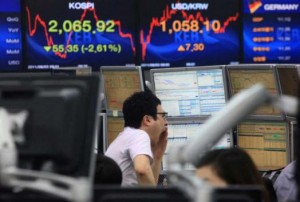The failed promise of market timing
To stick to an indexing strategy over a lifetime, you need to let go of the idea that you can improve it with some kind of active overlay.
Advertisement
To stick to an indexing strategy over a lifetime, you need to let go of the idea that you can improve it with some kind of active overlay.
 I’ve long believed the most difficult part of being a Couch Potato investor is resisting temptation. Index investors are asked to be content with market returns, but they are bombarded daily by fund companies, advisers and market gurus who promise more.
Back in May 2012, I wrote about one of these enticing strategies, described in The Ivy Portfolio by Mebane Faber and Eric Richardson. The so-called Global Tactical Asset Allocation (GTAA) strategy grew out of Faber’s widely read research paper, A Quantitative Approach to Tactical Asset Allocation, first published in 2007. It begins with a diversified portfolio inspired by the Yale and Harvard endowment funds, combing traditional and alternative asset classes. The “tactical” part involves using market timing to move in and out of these asset classes based on 10-month moving averages.
Faber updated the paper in early 2013 and it now includes four full decades of data. From 1973 through 2012, the GTAA strategy shows exactly one negative year: a modest loss of –0.59% in 2008. And over those 40 years, the GTAA delivered an annualized return of 10.48% with a standard deviation of 6.99%, compared with a 9.92% return and higher volatility (10.28%) for a buy-and-hold strategy using the same five asset classes (US and foreign stocks, bonds, real estate and commodities).
I’ve long believed the most difficult part of being a Couch Potato investor is resisting temptation. Index investors are asked to be content with market returns, but they are bombarded daily by fund companies, advisers and market gurus who promise more.
Back in May 2012, I wrote about one of these enticing strategies, described in The Ivy Portfolio by Mebane Faber and Eric Richardson. The so-called Global Tactical Asset Allocation (GTAA) strategy grew out of Faber’s widely read research paper, A Quantitative Approach to Tactical Asset Allocation, first published in 2007. It begins with a diversified portfolio inspired by the Yale and Harvard endowment funds, combing traditional and alternative asset classes. The “tactical” part involves using market timing to move in and out of these asset classes based on 10-month moving averages.
Faber updated the paper in early 2013 and it now includes four full decades of data. From 1973 through 2012, the GTAA strategy shows exactly one negative year: a modest loss of –0.59% in 2008. And over those 40 years, the GTAA delivered an annualized return of 10.48% with a standard deviation of 6.99%, compared with a 9.92% return and higher volatility (10.28%) for a buy-and-hold strategy using the same five asset classes (US and foreign stocks, bonds, real estate and commodities).
| Buy & Hold | GTAA | |
| 2009 | 18.74 | 12.77 |
| 2010 | 14.04 | 3.65 |
| 2011 | 2.81 | 2.49 |
| 2012 | 11.57 | 1.26 |
| Five-Fund Portfolio | ETF | 1 year | 3 years | ||
| 20% | US equities | VTI | 33.88 | 16.07 | |
| 20% | Foreign stocks | VEU | 14.18 | 5.49 | |
| 20% | 10-Year government bonds | IEF | -6.30 | 4.42 | |
| 20% | US real estate | VNQ | 3.10 | 9.72 | |
| 20% | Commodities | DBC | -6.67 | -1.53 | |
| Total | 7.64 | 6.83 | |||
| 10-Fund Portfolio | ETF | 1 year | 3 years | ||
| 10% | US large cap | VV | 32.10 | 15.94 | |
| 10% | US small cap | VB | 39.04 | 16.19 | |
| 10% | Foreign developed stocks | VEA | 21.39 | 8.33 | |
| 10% | Foreign emerging stocks | VWO | -4.60 | -2.28 | |
| 10% | US bonds | BND | -2.21 | 3.25 | |
| 10% | TIPS (inflation-protected bonds) | TIP | -9.19 | 3.47 | |
| 10% | U.S real estate | VNQ | 3.10 | 9.72 | |
| 10% | Foreign real estate | RWX | 9.06 | 10.70 | |
| 10% | Commodities | GSG | -0.70 | -1.10 | |
| 10% | Commodities | DBC | -6.67 | -1.53 | |
| Total | 8.13 | 6.27 | |||
Share this article Share on Facebook Share on Twitter Share on Linkedin Share on Reddit Share on Email